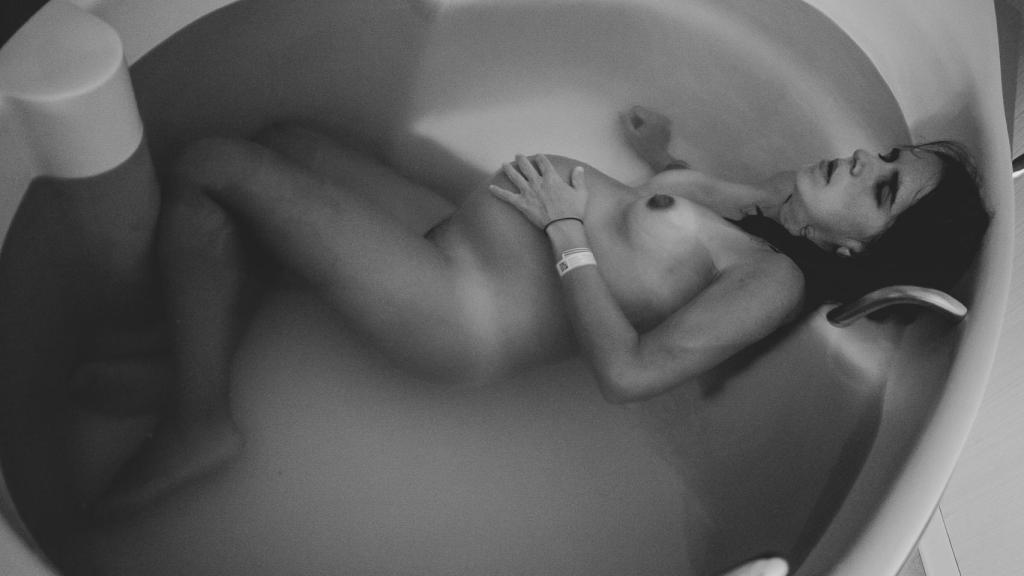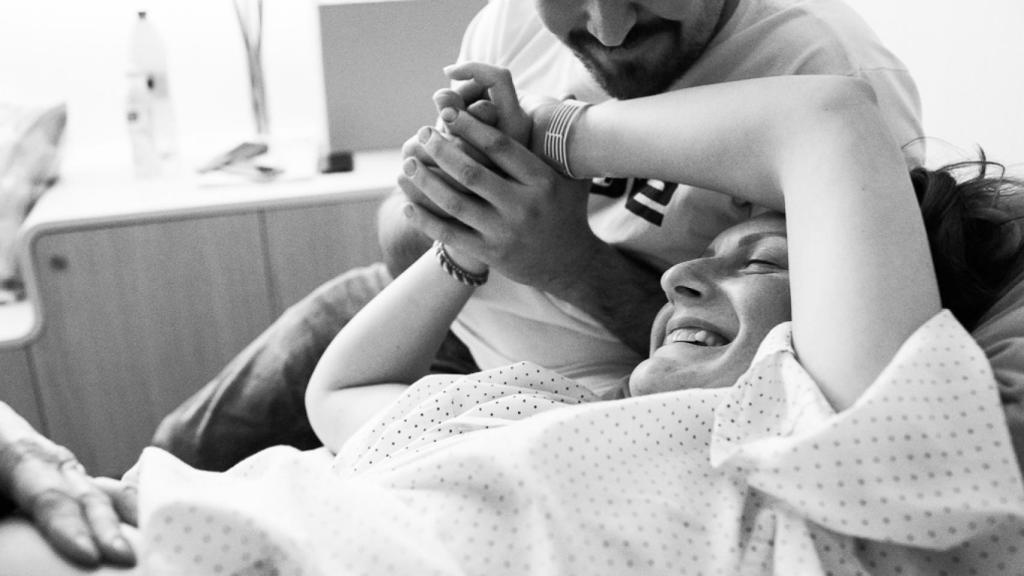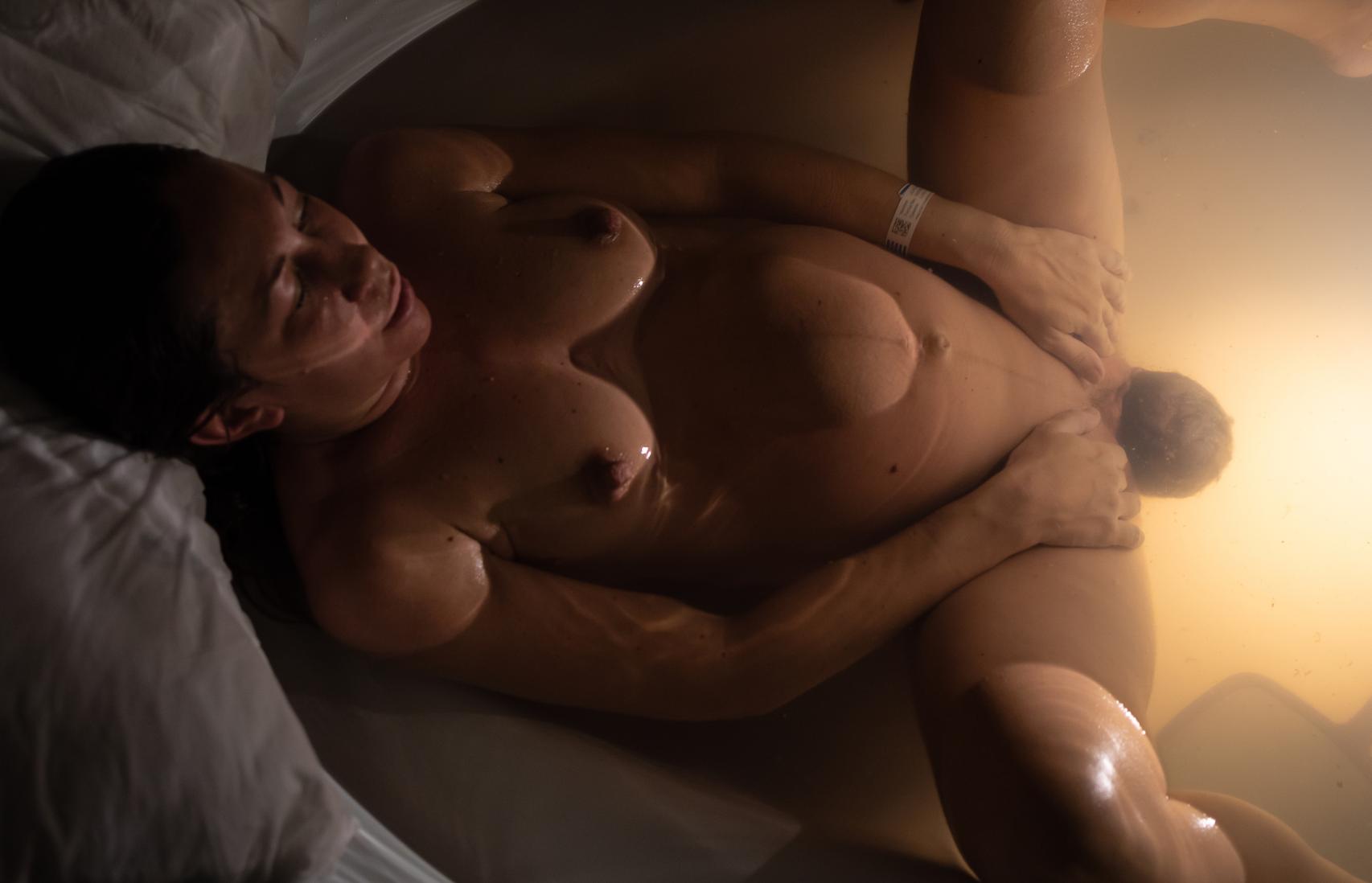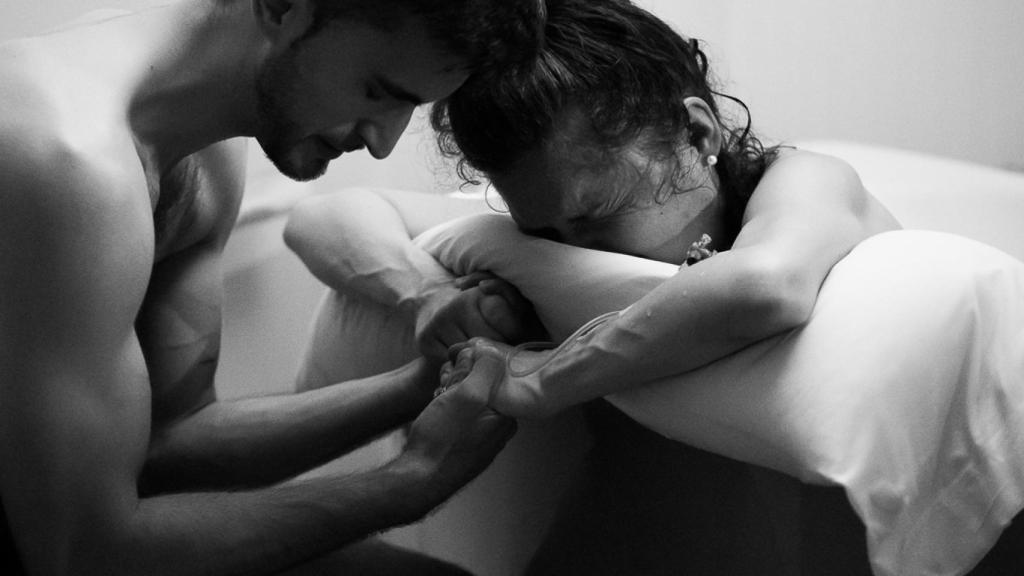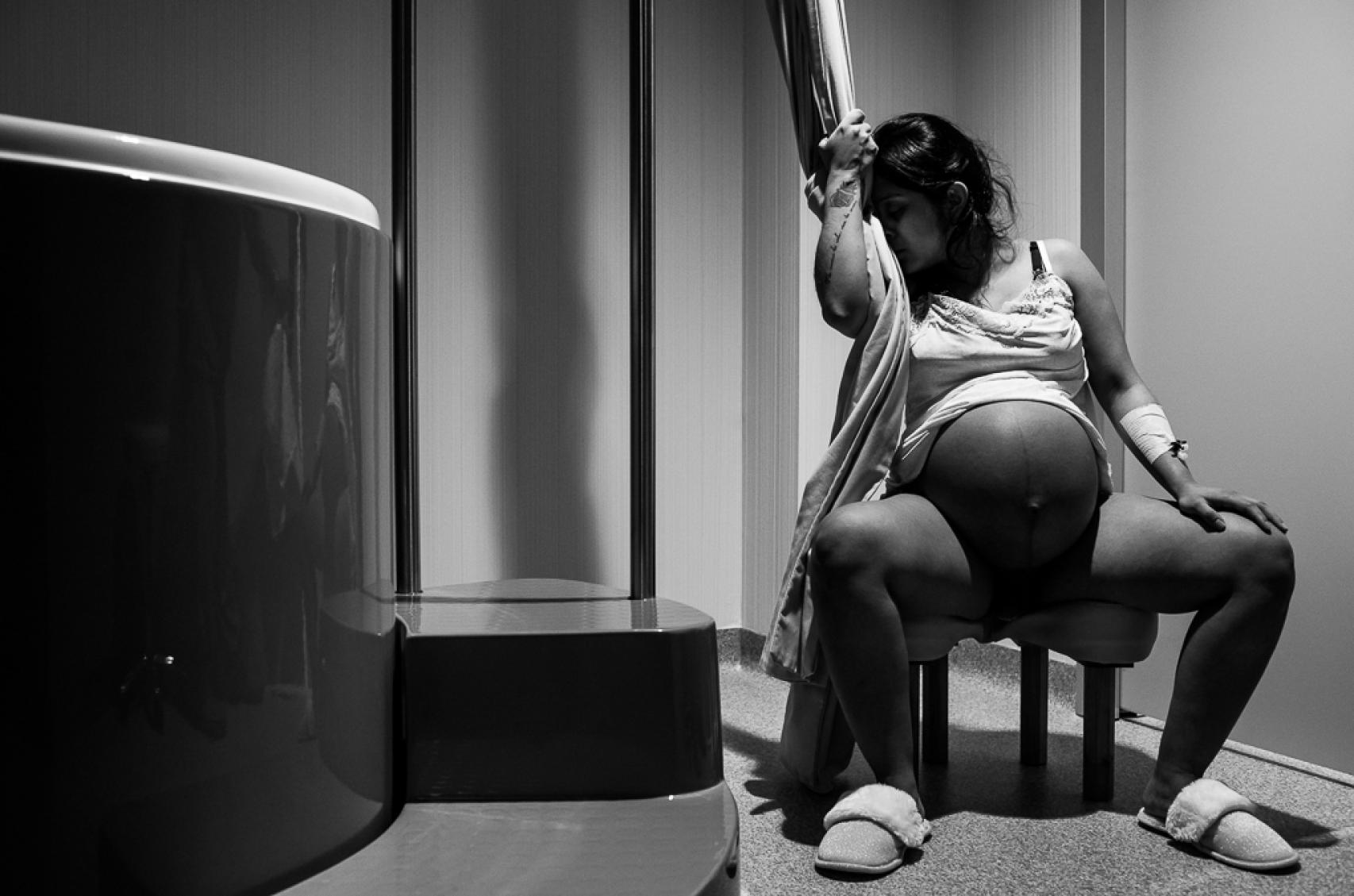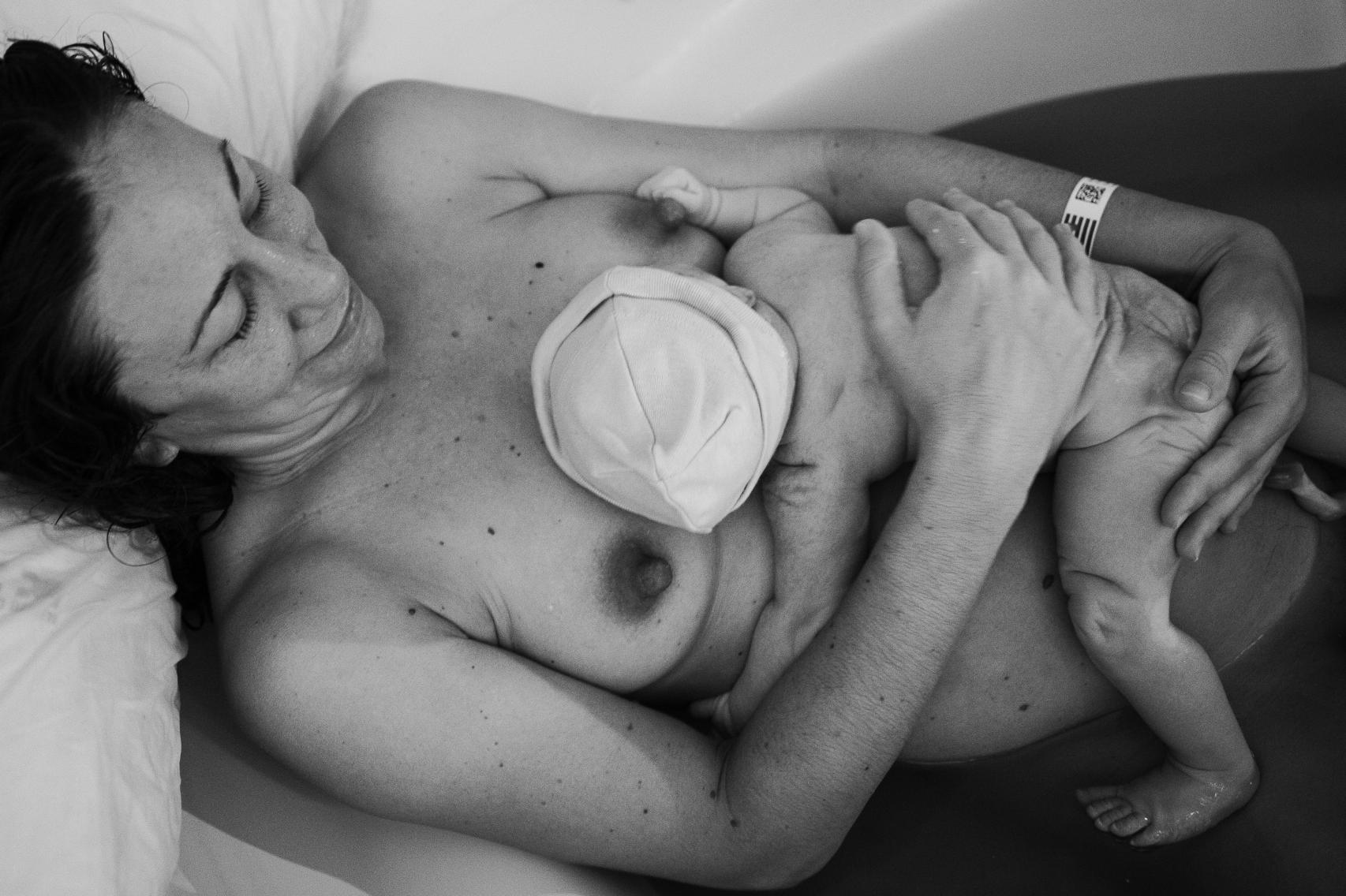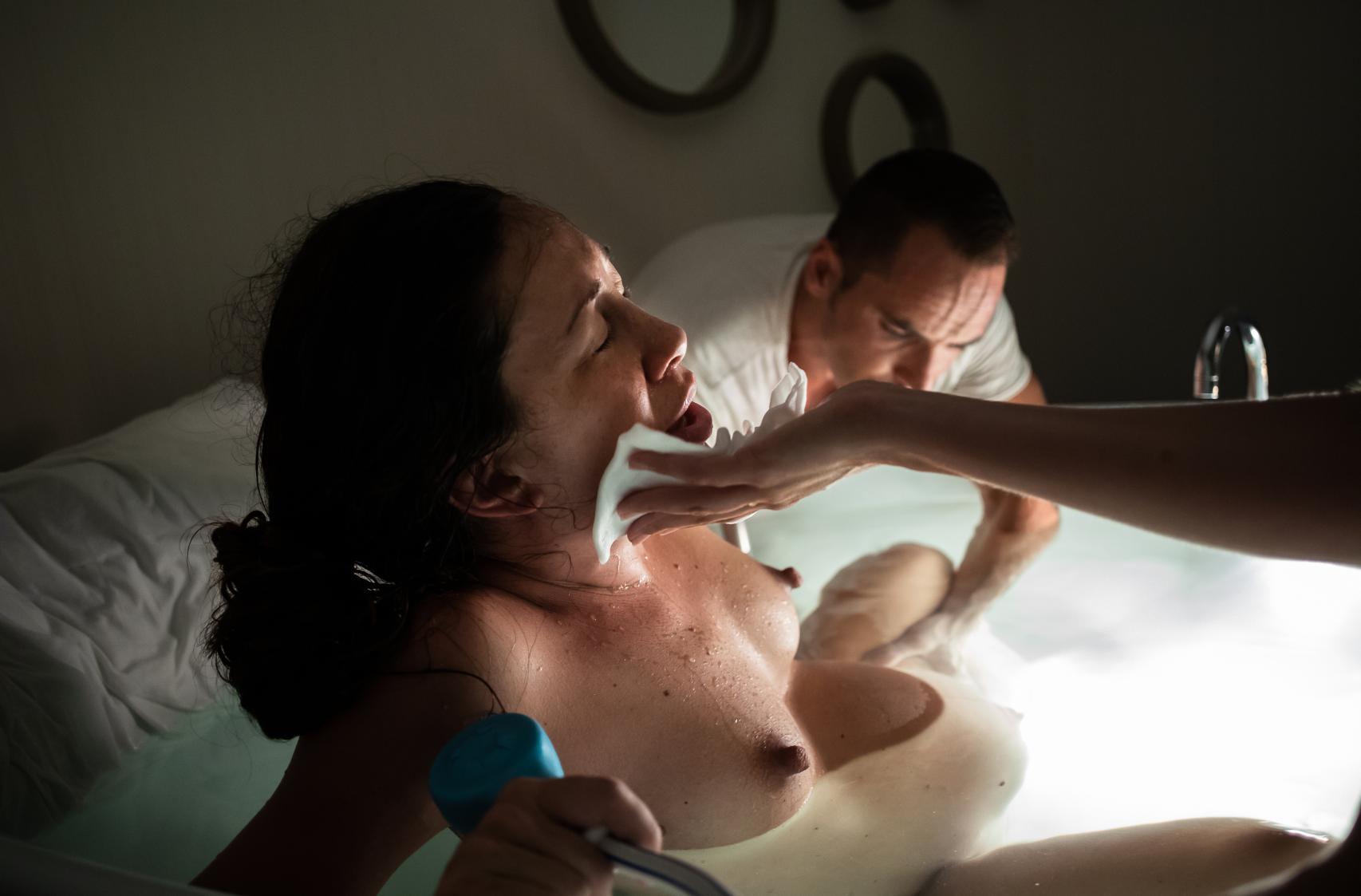Related news
Childbirth is the most animalistic experience a woman can have. It is a time of mixed emotions between fear if something goes wrong and the desire to see the baby. It can take forever, be full of physical pain and fatigue, blood … But it is also a unique moment full of naturalness and beauty in which the woman brings out all the inner strength that she did not know she had to bring her baby into the world.
That’s why the photographers Ana Cruz and Raissa Senna It is important for couples to have a memory of those moments that will change them forever and They accompany them camera in hand during the hours that are necessary until the expected birth occurs.
For Raissa, this type of photography is “a very powerful maternal empowerment tool” because, after all the difficulties that childbirth can bring, “they see that they have succeeded” and “they recognize themselves in that woman who appears in the image.” “For example, recently a girl was in labor and she wanted it to be natural, she was very convinced and had a lot of information. Although she was very tired at the end she did it and it was a beautiful birth in the bathtub. Then she wrote to me and said that without The photos would have a bittersweet memory because it cost him and it hurt a lot, but thanks to the images he kept the sweet part because there are many photos in which he is smiling, as a lot of intimacy with his partner and he has become very empowered “.
On the other hand, Ana believes that birth is a unique moment and for that alone she believes that the memory is worth having. “I usually say that weddings are social events that we can repeat, but the birth of that baby will never be repeated. From my point of view, the event of being a mother, being a father, being a family with the birth of a baby, is more important than a wedding. Remembering this is much more authentic, animal. You are playing as ‘the being’, rather than a social event. It is the most natural thing that fathers and mothers can remember as the beginning of a family. “
In Spain, women who decide to immortalize their birth by hiring a professional photographer are still looked with strange faces. Some find it disgusting, others consider it too intimate a moment to share with strangers … However, little by little the number of women who want to have that memory is increasing forever, something that, as Ana Cruz points out, is already very common in other countries.
“Here it is not so normalized, there is a lot of prejudice. It is true that in the past many couples who see more photographs say: ‘Oh, I would have liked it’, but at first they are not encouraged, also because of the fear of ‘what will they say’ “. Due to the reluctance of many Spanish couples, the 80% of Ana’s clients are foreigners, and the reports must always be done in private health, which does give them access to deliveries.
Lack of professionals
The suspicion of childbirth photography also extends to the professionals themselves. What’s more, Raissa Senna, who has been photographing births since last year, had to go to other countries to learn. She studied Audiovisuals and Photography and became interested in childbirth photography years ago, after suffering an abortion and obstetric violence. “I found a great variety of photographs and videos of childbirth that had nothing to do with the experience that I had gone through. I saw that there was another reality and that was the one that we would like to have for all women that go through that process. “
When the pandemic hit, she was working on other things and realized that she wanted to follow her dream and dedicate herself solely to childbirth photography. He began to look for professionals to guide him on this path and, after encountering “many rejections”, he left Spain to learn from other colleagues. “I spent many months with a photographer who taught me everything she knew.”
Back in Spain he began to propose to pregnant women to take pictures of their deliveries for free “to gain experience and because he had never been in a delivery room either” and found the possibility of doing it in a Madrid hospital. Since then it has been making its way, to the point that the last two months has reached the limit of deliveries that can attend, something that had never happened to him.
Midwife and photographer
For her part, Ana Cruz is almost a pioneer in this sector and has spent years with childbirth photography, or birth photography, as she prefers to call it. “When you talk about childbirth photography to parents it sounds like something medical, something very crude. That is why I talk to them more about birth photographs, so their approach is different, “he explains.
Ana is a midwife, but also a lover of photography. Even before it was fashionable to do a photo shoot with newborns, more than 10 years ago, she was already proposing it to parents. “Later, following the birth of my second child eight years ago, I met a team of midwives privately and I spoke to them about the possibility of attending their births to take photos and they loved the idea.”
In childbirth
The two photographers comment on the difficulty that this work brings with it: they have to have a wide availability (from week 37 they should be prepared in case the woman goes into labor, whatever the day or time) and spend many hourssince you never know how long the labor will last. They usually go to the parents when the woman has dilated about six centimeters to “spend two or three hours with the parents.”
Raissa goes earlier if the woman asks because she wants to document those first moments of dilation before going to the hospital, but in general, the two agree that so many hours can be too long. “Being six hours dilated is too long for photography because it seems that labor is just dilating, dilating and dilating, when the peak moment is the birth, the first glances, the effort and emotional intensity of the expulsive “, says Ana.
One of the keys to childbirth photographs is the environment around them. Like good photographers, they play with lights and perspectives, but within that, each has a completely different way of working.
Ana is committed to being proactive during childbirth and take advantage of your midwifery knowledge to capture the most important moments. “I understand that when you don’t know the environment, what you want is not to bother. In my case, I know how I have to behave in a certain situation. Also, during the dilation the family is reassured that there is another midwife because they can express any doubt. I take a trust with that much older couple and that makes it easier for me when it comes to transmitting with an image how the woman is living it. “
“That is why what I do is create a suitable climate using my specialty as a midwife so that the family, in this case the parents, looks very natural at the time of the baby’s birth, and also that the team that is there is there. comfortable also serving them, “he says.
Without being seen
Raissa, however, moves into the shadows and follows a more documentary style. He does not want his presence to upset the couple, especially the mother. “Before delivery I always try to have a meeting with the family, both with the woman and with her companion, so as not to be the strange face in her room. I no longer intervene in anything thereWhat I want is for the woman to have her desired delivery and to have her memory of the delivery, not that someone was taking pictures, “he says.
To achieve this, it acts mainly when the midwives are there to blend in with the staff and take advantage of the fact that the woman is on “the birth planet”. “Most women enter a altered state of consciousness and unaware of movement outside because they are in an internal work, of themselves with their body and their baby. That is an advantage for me because that way I can move without them noticing. The other day, for example, I went into labor and the girl was in the shower. I got into the bathroom, took pictures of him … After being around 3 hours, he started yelling for someone to call me to come. We all laughed because it had already been several hours. “
Complications
Unfortunately birth complications are even more frequent than we would like and these photographers have had to witness more than one. Although neither of them goes into the operating room when, for example, an emergency cesarean has to be done – it is not allowed – there are times when Ana continues with her photographic report. “I am not going to be where the father is not. In an urgent cesarean section I stay where the father is waiting and I prefer to take some photographs where you can see that restless waiting and that joy of the first time you see your son “.
Raissa often chooses to keep the camera until further notice. “It depends on the situation, but I usually wait for them to go back to the room. Also, what I agree with women is that if the labor ends with an intervention then I go back to their house or their room when they are relaxed and calm and I take pictures of them with the newborn as a way to compensate “.
Of course, these situations should always be treated as sensitively as possible. “Recently a baby needed resuscitation right after birth and went to neonates. There I take off the camera and ask the woman if she needs anything. In that case, her husband left with the baby and I stayed with her in the room so that she would be more calm and accompanied. “In the end, as both emphasize: the goal is to leave a nice and special memory of the birth.
Follow the topics that interest you
Reference-www.elespanol.com
